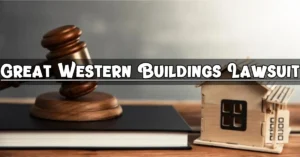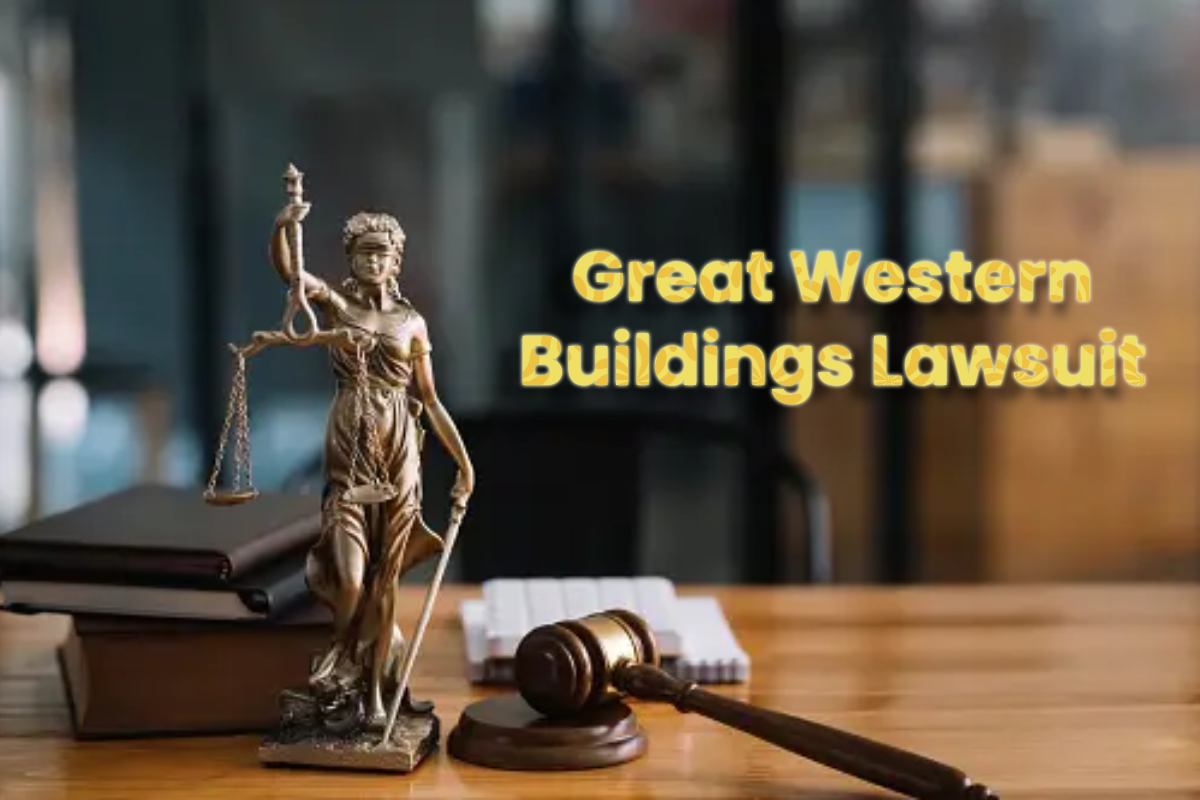Contents
Introduction
In the dynamic landscape of urban development, disputes often arise, shaping the very fabric of cities. Among these contentious issues, few have captured the public’s attention like the Great Western Buildings lawsuit. This legal saga, which unfolded over several years, not only delved into matters of property rights and historical preservation but also sparked debates about the balance between progress and heritage. In this article, we embark on a journey through the intricacies of the Great Western Buildings lawsuit, shedding light on the key players, legal battles, and lasting implications of this landmark case.
The Genesis of the Great Western Buildings
Nestled in the heart of a bustling metropolis, the Great Western Buildings lawsuit stood as a testament to a bygone era. Constructed in the late 19th century, these majestic structures boasted architectural grandeur and historical significance, serving as landmarks in the cityscape for generations. However, as urbanization accelerated and the demand for prime real estate soared, the fate of these iconic buildings hung in the balance.
Enterprising developers eyed the Great Western Buildings lawsuit as prime candidates for redevelopment, envisioning modern skyscrapers and lucrative commercial spaces in their place. Yet, their plans were met with staunch opposition from preservationists, historians, and community activists who saw the structures as irreplaceable links to the city’s past. Thus began a protracted legal battle that would come to define the future of urban development in the region.
The Legal Battle Unfolds
At the heart of the Great Western Buildings lawsuit lay a complex web of legal arguments and competing interests. On one side stood the developers, armed with plans for ambitious redevelopment projects that promised economic growth and revitalization. On the other side stood preservationists and concerned citizens, advocating for the protection of architectural heritage and the preservation of the city’s cultural identity.
The legal battle unfolded on multiple fronts, with each side marshaling evidence, expert testimony, and strategic arguments to bolster their case. At the center of the dispute were questions of property rights, zoning regulations, and the interpretation of historical preservation laws. As the case made its way through the courts, it garnered widespread attention from the media and the public, shining a spotlight on the broader issues at stake.
Key Players and Perspectives
Amidst the legal wrangling, a diverse cast of characters emerged, each with their own motivations and perspectives on the Great Western Buildings lawsuit. Developers touted the economic benefits of their proposed projects, arguing that redevelopment would create jobs, stimulate growth, and generate much-needed revenue for the city. Preservationists, on the other hand, championed the intrinsic value of historical architecture, warning of the irreversible loss of cultural heritage if the buildings were demolished.
Local residents weighed in with their own opinions, grappling with the competing desires for progress and preservation. Some saw the Great Western Buildings lawsuit as symbols of the city’s past, deserving of protection and reverence. Others viewed them as obstacles to be overcome in the pursuit of modernization and urban renewal. As the debate raged on, lines were drawn, alliances formed, and rifts deepened within the community.
The Legacy of the Great Western Buildings Lawsuit
 In the end, the outcome of the Great Western Buildings lawsuit was as much a reflection of broader societal values as it was a legal decision. While the specifics varied from case to case, the overarching themes of progress versus preservation, development versus heritage, echoed in cities around the world. The lawsuit served as a catalyst for discussions about the delicate balance between growth and sustainability, innovation and tradition, that continue to shape urban planning and development strategies today.
In the end, the outcome of the Great Western Buildings lawsuit was as much a reflection of broader societal values as it was a legal decision. While the specifics varied from case to case, the overarching themes of progress versus preservation, development versus heritage, echoed in cities around the world. The lawsuit served as a catalyst for discussions about the delicate balance between growth and sustainability, innovation and tradition, that continue to shape urban planning and development strategies today.
For some, the resolution of the Great Western Buildings lawsuit marked a victory for progress and economic development, paving the way for ambitious redevelopment projects and a brighter future for the city. For others, it was a sobering reminder of the fragility of historical heritage in the face of relentless urbanization and commercial interests. Regardless of where one stood on the issue, the lawsuit left an indelible mark on the city’s landscape and collective memory, serving as a cautionary tale and a catalyst for change.
Exploring the Lasting Implications
Beyond its immediate impact on the Great Western Buildings lawsuit themselves, the lawsuit had far-reaching implications for urban development policy, historical preservation efforts, and community engagement initiatives. One of the most significant outcomes was the heightened awareness of the need to strike a balance between development and preservation in urban planning decisions.
In the aftermath of the lawsuit, cities began to reassess their approach to historic preservation, recognizing the importance of protecting architectural heritage while accommodating the demands of a rapidly growing population. New zoning regulations were implemented to incentivize the adaptive reuse of historic buildings, encouraging developers to incorporate old structures into new developments rather than demolishing them outright.
Looking Ahead
As cities continue to evolve and grow, the lessons learned from the Great Western Buildings lawsuit remain as relevant as ever. In an era of rapid urbanization and globalization, it is essential to strike a balance between the imperatives of progress and the preservation of cultural heritage. Sustainable development practices, community-driven planning processes, and robust historic preservation efforts are critical to ensuring that cities remain vibrant, livable, and inclusive for future generations.
Moreover, the legacy of the Great Western Buildings lawsuit serves as a reminder of the power of collective action and the importance of civic engagement in shaping the built environment. By working together to protect our shared heritage and advocate for responsible development practices, we can create cities that honor the past while embracing the future.
Conclusion
The Great Western Buildings lawsuit stands as a testament to the complexities of urban development and the enduring tensions between progress and preservation. In its resolution, we find lessons about the importance of community engagement, the need for thoughtful planning, and the imperative of striking a balance between growth and heritage. As cities evolve and transform, the legacy of the Great Western Buildings lawsuit reminds us of the importance of preserving our past while embracing the promise of the future.
Also Read: Heardle 90s
